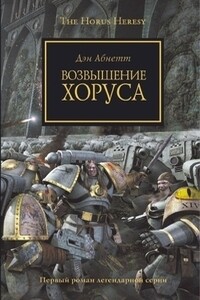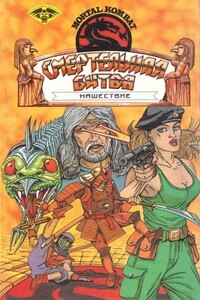Fischig looked particularly unimpressed with the vehicle.
I seldom had a use for it. On most worlds, local transport was available. I hadn't expected Damask to be so… unpopulated.
Records said there were at least five colony settlements, but there had been no sign of any from orbit, and no response to vox or astropathical messages. Had the human population of Damask withered and died in the past five years since records were filed?
We'd left Aemos, Bequin and Lowink with the cutter, which had put down on the shores of a wide river basin. We'd carefully disguised it with camouflage netting. Midas had chosen a landing site within speeder range of some of the colony locations, yet far enough out to avoid being seen by anybody at those locations as we made descent. Tobius Maxilla awaited our pleasure aboard the Essene in high orbit above.
Midas fired up the speeder's misfiring engines and we moved off overland from the hidden cutter towards the last recorded position of the closest human settlement.
Tumble-brush scudded around the speeder, and we rode through scarp-land where root-anchored trees spread aloft branches blistering with gas-sacks so that the whole plant seemed to strain against the soil and gravity in the wind. Grazers, little bat-like mammals with membranous wings, fluttered around. Larger gliders, immense headless creatures that were all flat wingspan and fluked tail, turned silently on the thermals high above us. The landscape was jagged, broken and had the bluish cast of flint. The air was dark and noxious, and we used rebreather masks from time to time.
We followed the frothy, brackish river waters for twenty kilometres and then left the wide flood banks and juddered up through rocky scarps, sculptural deserts formed by elementally shattered flint outcrops, brakes of dusty yellow fern, and seas of lichen trembling in the gusting wind. The ugly moon rose higher, though there was still daylight left.
Midas had to slew the speeder to a halt at one place where a group of much larger grazers broke across the trail, panicked by the sound of the engines. They were dove-grey giants with steep, humped backs, trunk-like snouts and long attenuated legs ending in massive pads. Their legs seemed too slender and long to support such bulks, but like the local plant life, I
suspected the swollen torsos of these animals contained supporting bladders of gas.
They snorted and clattered away into the fern thickets. The speeder had stalled. Midas got out and cussed at the rotors of the turbo-fan for a few minutes until the mechanism chuckled back into life. As we waited, Fischig and I stretched our legs. He climbed up onto an igneous boulder and fiddled with the straps of his rebreather as he watched the hot blue streaks of a meteor storm slice the gloomy sky on the western horizon.
I gazed across the fern thickets. Air-grazers chirruped and darted in the hushing leaves. The wind had changed, and a forest-herd of ball-trees scudded in through the edges of the ferns, squeaking and rasping as the wind drove their globes and root-systems through the grounded plants.
We pushed on another ten kilometres, coming down into a rift valley where the ground became thick, sedimentary soil, black and wet. The vegetation here was richer and more rubbery; bulb snakelocks and bright, spiky marsh lilies, clubmoss, horsetail, tousled maidenhair, lofty cycads festooned with epiphytic bromeliads and skeins of ground-draping gneto-phytes. Clouds of tiny insects billowed in the damper glades and along seeping watercourses, and large, hornet-like hunters with scintillating wings buzzed through the damp air like jewelled daggers.
There/ said Fischig, his eyes sharp. We stopped and dismounted. A muddy expanse near the track had once been a cultivated field, and the rusty carcasses of two tilling machines lay half-buried in the sucking soil.
A little further on, we passed a marker stone struck from flint. 'Gillan's Acre' it read in Low Gothic.
We'd passed the township itself before we realised, and turned back. It was nothing but the stumps of a few walls covered with wispy weed-growth and rampant gnetophytes. Until at least five years before, this had been a community of eight hundred. A scan showed metal fragments and portions of broken machinery buried under the soil.







